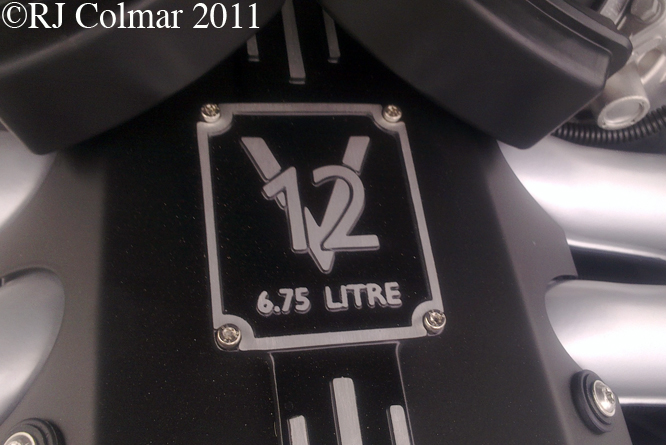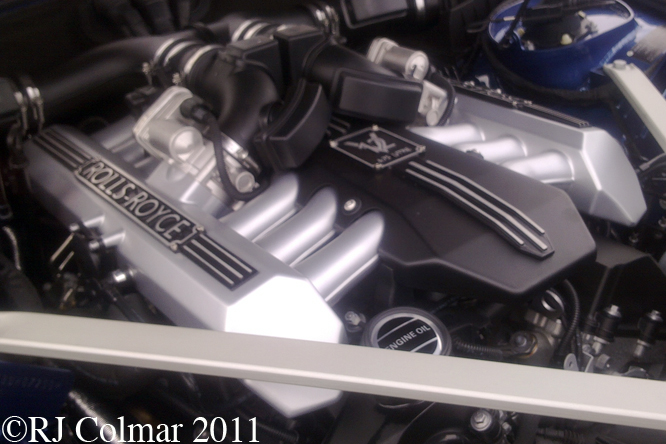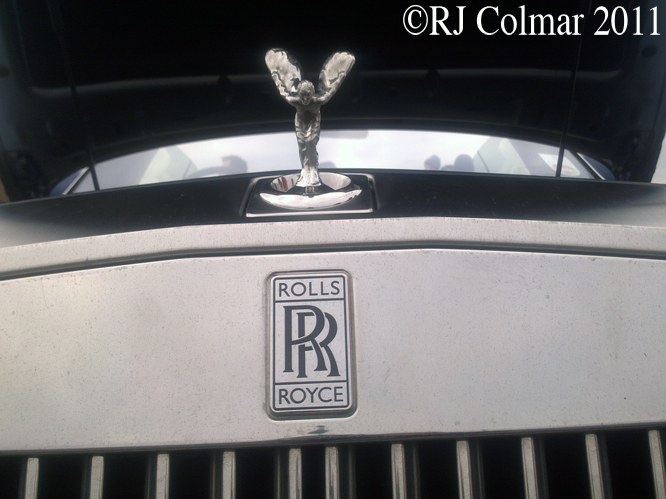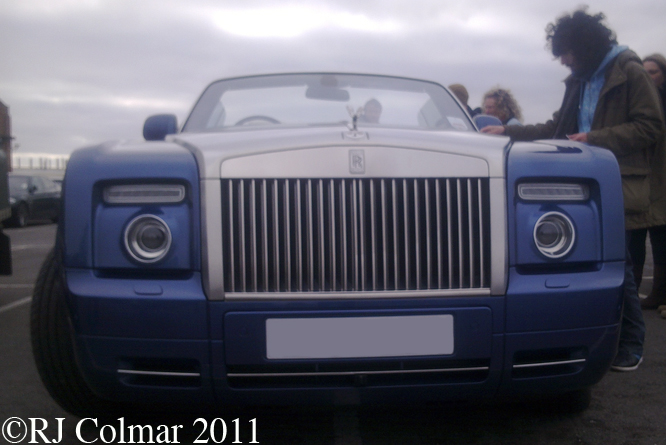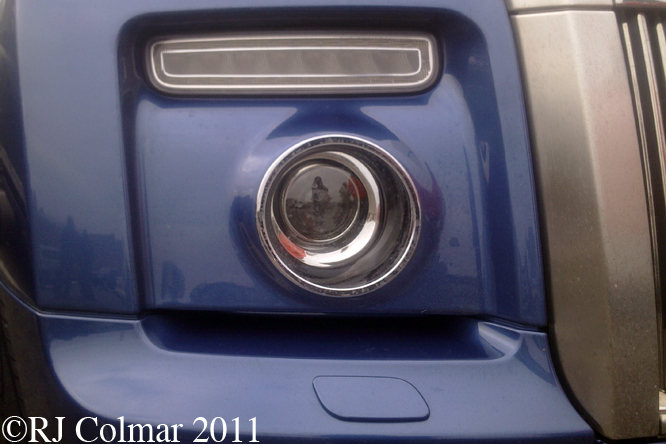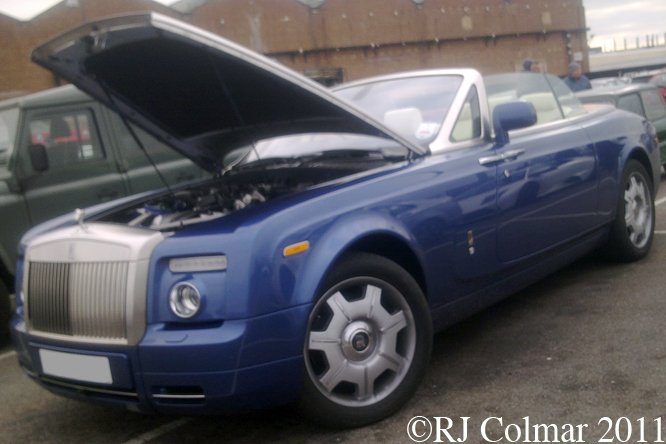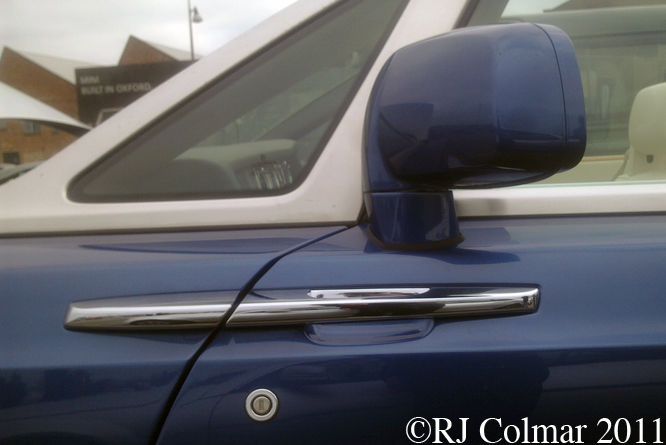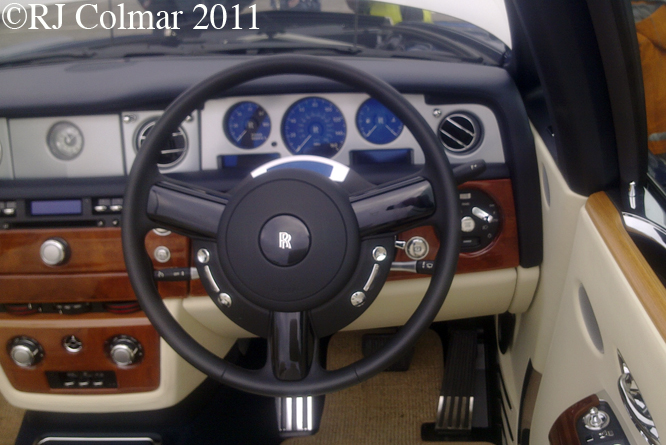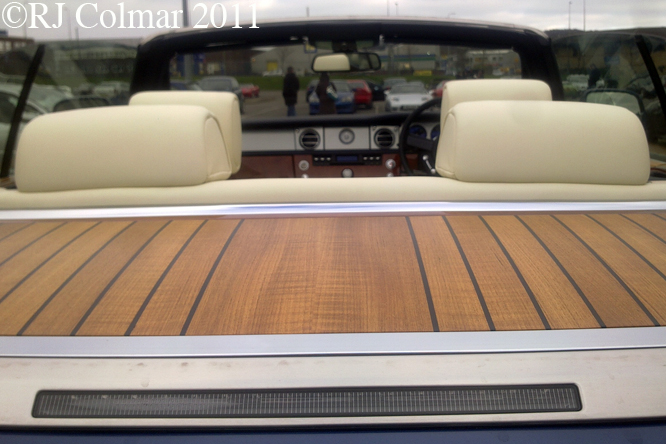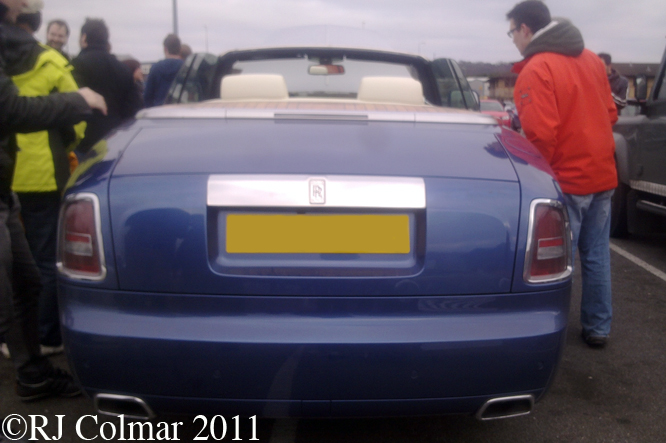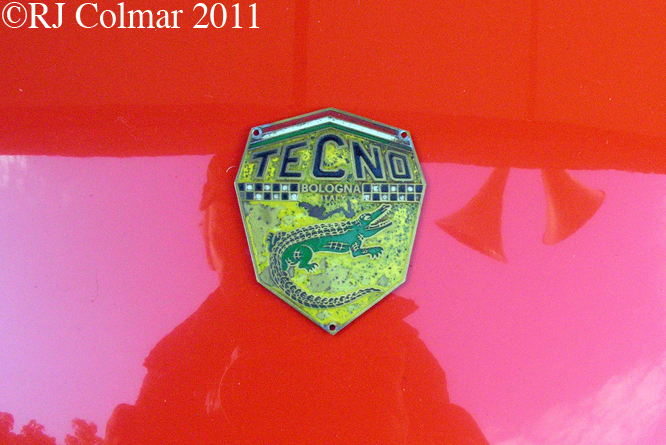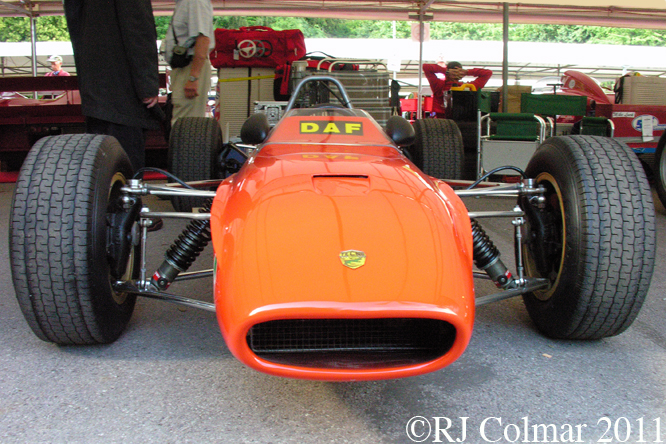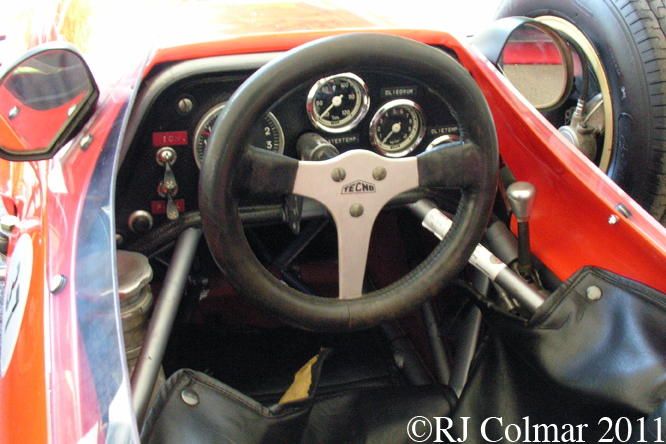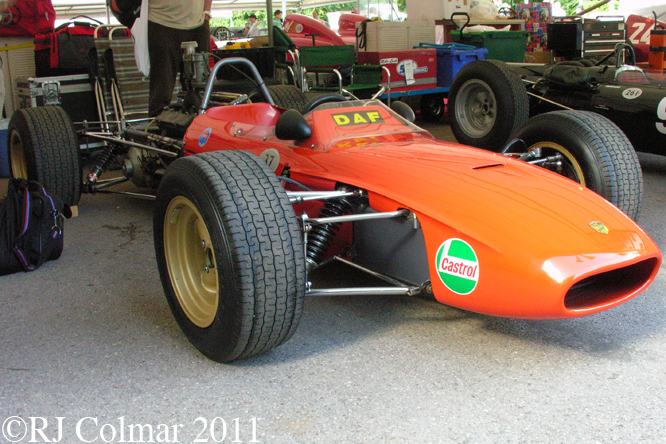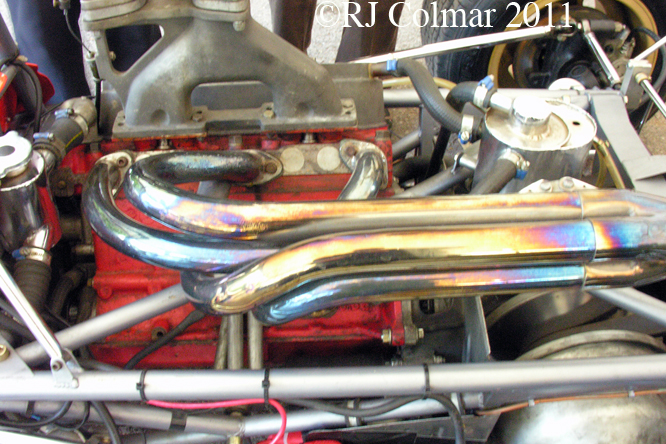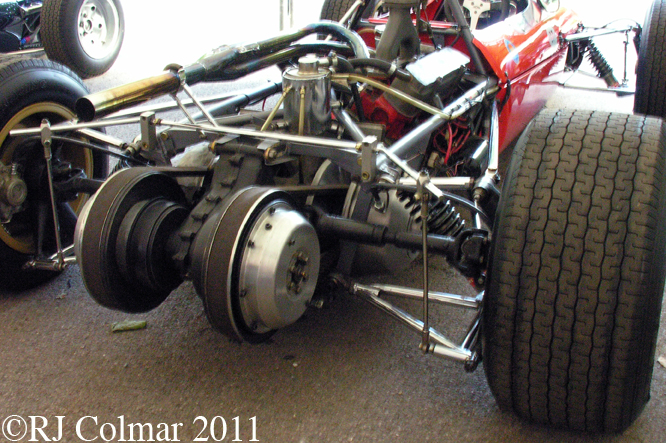With styling inherited from the 2006 9 litre / 549 cui V16 100EX concept car the Rolls Royce Phantom Drophead Coupé was launched in 2007 at the North American International Auto Show held in Detroit.
Regrettably the V16 was not part of the production spec of the Phantom Drophead Coupé a ‘puny’ 6.75 litre / 412 cui V12 first seen on the 2003 Rolls Royce Phantom saloon / sedan.
With twin turbochargers the V12 produces an effortless 453 hp enough to give the 2,620 kg / 5800 lbs vehicle sports car performance on acceleration and top speed, the sligthly lighter saloon / sedan can be pushed from rest to 186 mph in 60 seconds.
Thanks to electronic sensors the Spirit of Ecstasy ornament retracts in an emergency and can be set to retract whenever the doors are locked or when ever the owner chooses by a control in the glove box.
Naples Children and Education Foundation became the beneficiaries to the tune of US $1.6 million when the first Rolls Royce Phantom Drophead Coupé destined for the USA was sold at auction for $ 2m. It is believed this is the highest price ever paid for a new car at the time.
The ‘techno modern’ combination of LED lights and “faux-foglamp” projector-style xenon arc lamps, which in my humble opinion are something of an acquired taste, have been replaced with a less jarring design on the latest 2012 models.
Very much a hand built car, though painted in one of 44,000 colour options by robot, the body of this 2010 Drophead Coupé is crafted from aluminium.
The rear hinged coach doors are designed to “allow elegant entry and exit to and from the rear lounge seat”.
A convivial atmosphere is maintained within the Drophead Coupé by translating an avant garde reinterpretation of an English Gentleman’s clubroom into the cockpit.
Allegedly sitting in a Phantom Drophead Coupé is evocative of sitting aboard a 1930’s J Class, America’s Cup, yacht,
aided in no small measure by the decking which acts as a cover for the Drophead which is made from 5 layers of material including cashmere.
Despite a list price of over US $400,000 253 Drophead Coupés found a new home worldwide in 2007.
Thanks for joining me on this “Convivial Motoring” edition of “Gettin’ a li’l psycho on tyres”, I hope you will join me again tomorrow. Don’t forget to come back now !

